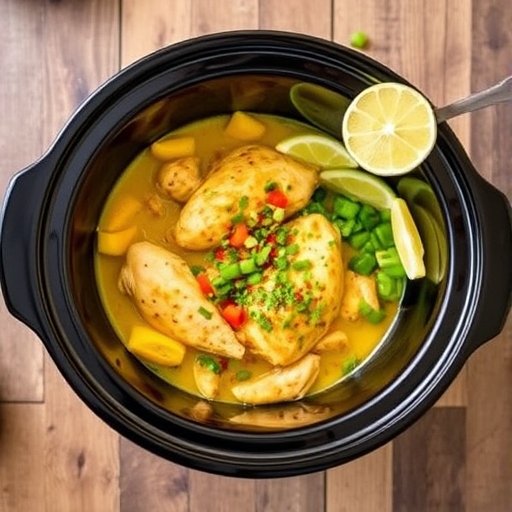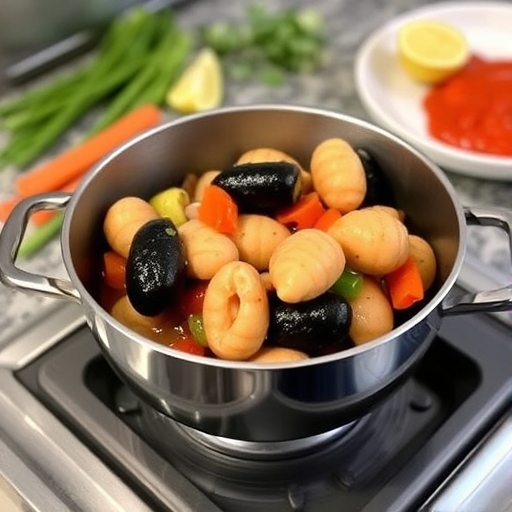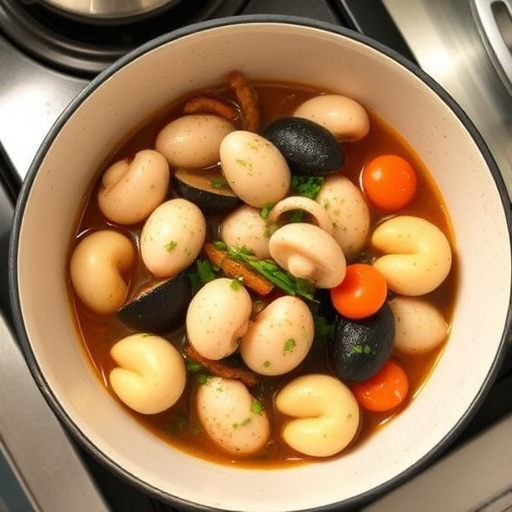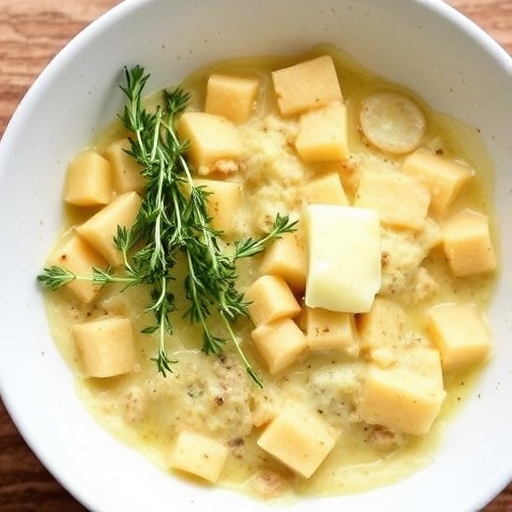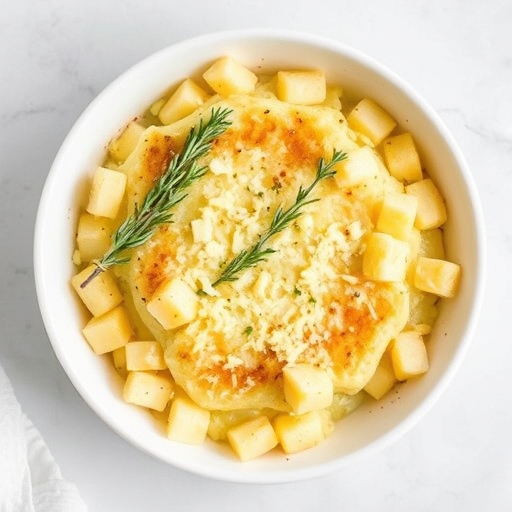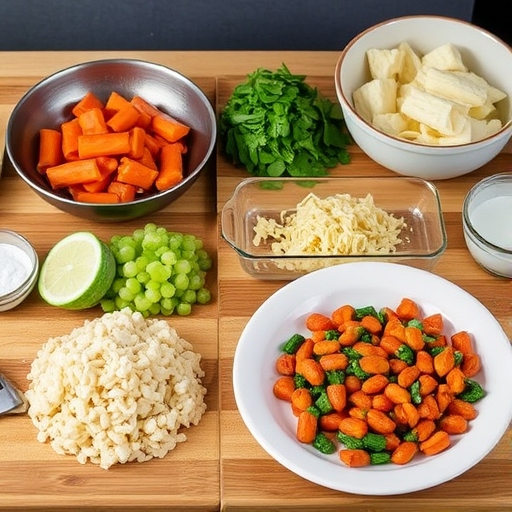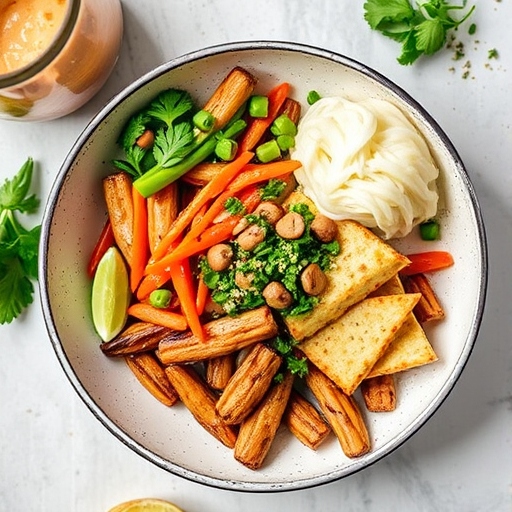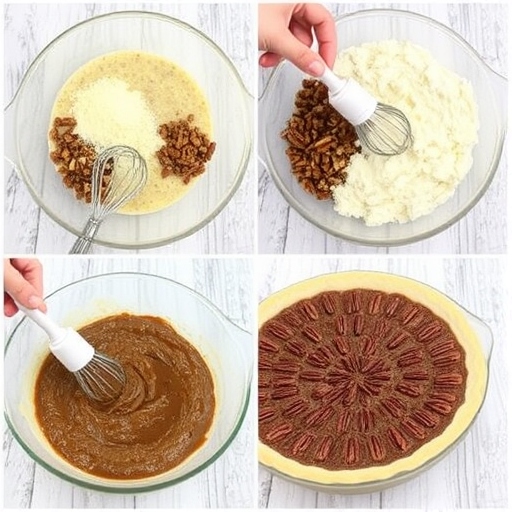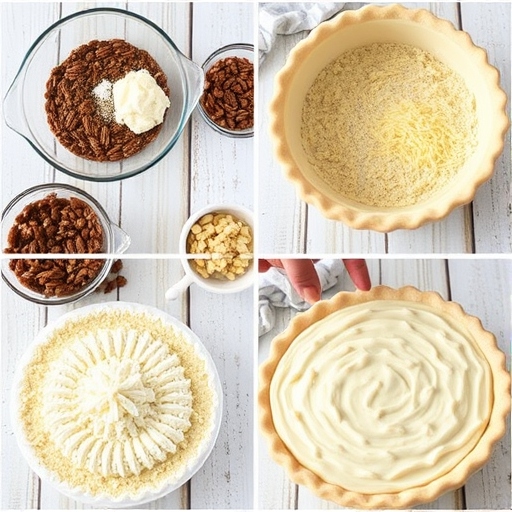If you’re looking to elevate your typical vegetable side dish, this Caesar Roasted Broccoli is the perfect recipe. Roasting the broccoli gives it a crispy, caramelized texture, and the rich, tangy Caesar dressing brings it to life with bold flavor. Whether served as a side for a weeknight dinner or as part of a larger meal spread, this broccoli dish will become a crowd-pleaser in no time.
Table of Contents
1. The Story Behind Caesar Roasted Broccoli
The Caesar salad is a classic, beloved dish with roots tracing back to the 1920s in Tijuana, Mexico. Caesar Cardini, an Italian-American restaurateur, is credited with its invention, combining ingredients like romaine lettuce, Parmesan cheese, croutons, and a signature dressing. Over the years, Caesar-inspired dishes have taken many forms. This Caesar Roasted Broccoli offers a twist on the original by pairing roasted vegetables with the creamy, garlicky flavors of Caesar dressing, providing a savory vegetable side that’s both comforting and healthy.
2. The Benefits of Making Your Own Caesar Roasted Broccoli
- Freshness: Homemade dressing means no preservatives or artificial ingredients.
- Control the Flavors: Adjust the level of garlic, cheese, and acidity to suit your preferences.
- Healthy: Broccoli is a nutrient-packed vegetable that provides fiber, vitamins, and antioxidants. Roasting it enhances its flavor without adding unnecessary calories.
- Versatile: This dish can be a side to a variety of meals, from grilled meats to pasta dishes, or even enjoyed on its own.
3. Essential Ingredients for the Perfect Caesar Roasted Broccoli
- Broccoli: The star of the dish. Look for fresh, vibrant green broccoli crowns for the best flavor.
- Olive Oil: Adds richness and helps with the roasting process.
- Caesar Dressing: Use a high-quality Caesar dressing, or make your own from scratch for a fresher flavor.
- Parmesan Cheese: Freshly grated for a sharper, more robust flavor.
- Garlic Powder: For an extra boost of savory flavor that complements the Caesar dressing.
- Lemon: Fresh lemon juice brightens up the dish, balancing the richness of the dressing.
4. Cultural History of Ingredients
- Broccoli: Native to the Mediterranean, broccoli has been a staple in European cuisine for centuries, valued for its health benefits.
- Caesar Dressing: A creation of Caesar Cardini, this dressing has become a cornerstone of American and global cuisine, offering a creamy, tangy profile that pairs well with a variety of dishes.
- Parmesan Cheese: A traditional Italian cheese, Parmesan has been produced for over 800 years and is known for its sharp, nutty flavor, often used in pasta dishes, salads, and, of course, Caesar salad.
5. Equipment You’ll Need
- Baking Sheet: For roasting the broccoli.
- Mixing Bowl: To toss the broccoli with dressing.
- Grater: For freshly grated Parmesan cheese.
- Tongs or Spoon: To mix and arrange the broccoli evenly on the baking sheet.
6. Step-by-Step Instructions for Caesar Roasted Broccoli
Ingredients:
- 1 large head of broccoli, cut into florets
- 2 tablespoons olive oil
- 3 tablespoons Caesar dressing (store-bought or homemade)
- 2 tablespoons freshly grated Parmesan cheese
- 1 teaspoon garlic powder
- Salt and pepper to taste
- 1 tablespoon fresh lemon juice (optional)
Directions:
Step 1: Prepare the Broccoli
- Preheat your oven to 425°F (220°C).
- Wash and dry the broccoli thoroughly. Cut the broccoli into bite-sized florets. Make sure they’re evenly sized so they cook uniformly.
Step 2: Toss with Olive Oil and Seasoning
- In a large mixing bowl, toss the broccoli florets with olive oil, ensuring each piece is coated.
- Add salt, pepper, garlic powder, and half of the grated Parmesan cheese. Toss again to evenly distribute the seasonings.
Step 3: Roast the Broccoli
- Spread the seasoned broccoli in a single layer on a baking sheet.
- Roast in the preheated oven for 20-25 minutes, stirring halfway through, until the broccoli is golden and crispy at the edges.
Step 4: Add the Caesar Dressing
- Once roasted, remove the broccoli from the oven and place it back in the mixing bowl.
- Drizzle the Caesar dressing over the hot broccoli and toss to coat evenly. The warmth from the broccoli helps the dressing adhere better.
Step 5: Garnish and Serve
- Sprinkle the remaining Parmesan cheese over the broccoli and squeeze fresh lemon juice on top for added brightness.
- Serve immediately and enjoy the crispy, creamy goodness!
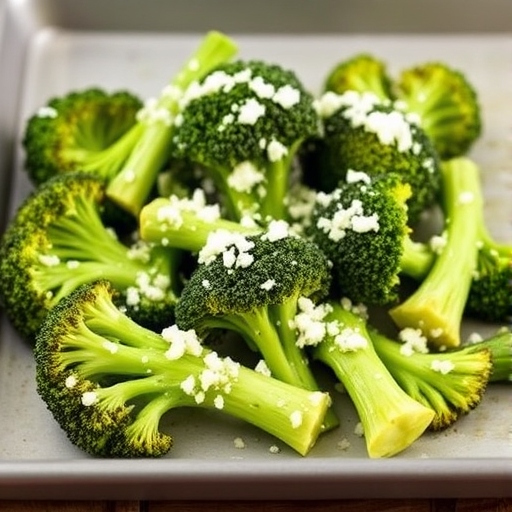
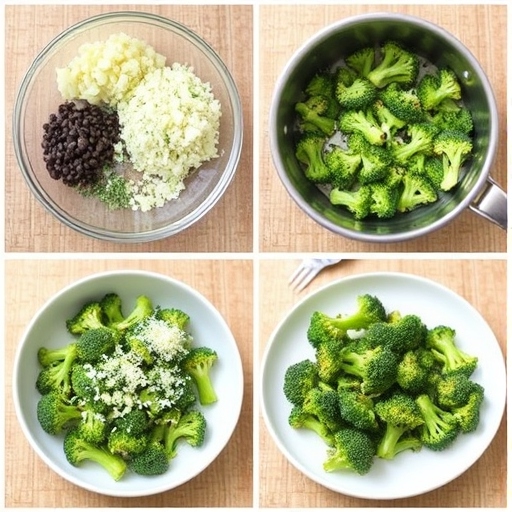
7. Suggestions for Serving and Storing
- Serving: Serve this Caesar Roasted Broccoli alongside roasted chicken, grilled fish, or as a topping for your favorite pasta.
- Storing: Store leftovers in an airtight container in the fridge for up to 2-3 days. Reheat in the oven for a few minutes to maintain the crispy texture.
8. Chef Simon’s Tips for Caesar Roasted Broccoli
- Crispiness: For extra crispiness, broil the broccoli for the last 2-3 minutes of roasting.
- Homemade Dressing: If you want to make your own Caesar dressing, blend mayonnaise, grated Parmesan, garlic, Dijon mustard, anchovy paste, lemon juice, and Worcestershire sauce.
- Add Crunch: For a fun twist, sprinkle crumbled croutons or roasted nuts on top before serving.
9. Emotional and Psychological Impact of Food
Roasted vegetables like broccoli are associated with comfort and nourishment. The rich, creamy Caesar dressing adds indulgence, making this dish both satisfying and heartwarming. It’s a perfect way to enjoy a vegetable side that feels like a treat.
10. Mindful Cooking Techniques
- Take time to appreciate the roasting process. Observe how the broccoli transforms, becoming tender inside and crispy on the outside.
- Focus on the flavors—balance the richness of the dressing with the freshness of the lemon and the bite of Parmesan.
11. Tips for Keeping the Recipe Fresh Longer
- Store leftover roasted broccoli in an airtight container. Reheat it in the oven at 375°F (190°C) for 5-7 minutes to restore its crispness.
- The Caesar dressing can be stored separately in a jar for up to a week, so you can use it on other salads or roasted vegetables.
12. Advanced Culinary Terms and Techniques
- Roasting: A dry-heat cooking method that involves cooking food at high temperatures in the oven, creating caramelization and enhancing natural flavors.
- Deglaze: While not used in this recipe, deglazing can add depth to the flavor. You might consider deglazing your baking sheet with a splash of white wine or broth to add flavor when you’re making a sauce.
13. Healthy Ingredient Alternatives
- Caesar Dressing: Opt for a lighter, yogurt-based Caesar dressing for fewer calories.
- Cheese: Substitute Parmesan with a reduced-fat version or a dairy-free cheese for a healthier twist.
14. More Serving Ideas
- Caesar Roasted Broccoli Salad: Toss the roasted broccoli with mixed greens, avocado, and a lemon vinaigrette for a refreshing salad.
- Pair with Grains: Serve over quinoa, brown rice, or couscous for a complete vegetarian meal.
15. Common Issues and Solutions
- Problem: Broccoli is too soggy.
Solution: Ensure that you’re not overcrowding the baking sheet and that the broccoli has plenty of space to roast, not steam. - Problem: Caesar dressing separates.
Solution: Make sure to toss the broccoli with the dressing when it’s hot to help it adhere better.
16. Variations to Try
- Spicy Version: Add a pinch of red pepper flakes to the broccoli before roasting for a spicy kick.
- Nutty Crunch: Sprinkle roasted almonds or pine nuts over the finished dish for added texture.
17. Nutritional Information and Health Benefits
Per serving (1 cup of roasted broccoli):
- Calories: 140
- Fat: 10g
- Protein: 5g
- Carbs: 7g
- Fiber: 4g
18. The Art of Pairing Caesar Roasted Broccoli
Pair with a crisp, refreshing white wine like Sauvignon Blanc or Chardonnay to complement the creamy texture of the Caesar dressing.
19. Weather and Recipe Outcome
- Roasted vegetables, especially in cooler weather, provide a cozy, comforting meal. The warmth from the roasted broccoli paired with the creamy Caesar dressing makes it ideal for fall and winter.
20. Other Vegetable Recipes to Explore
- Roasted Brussels Sprouts with Balsamic Glaze
- Garlic Parmesan Roasted Carrots
- Spicy Roasted Sweet Potatoes
Conclusion
Caesar Roasted Broccoli brings together the bold flavors of Caesar salad with the natural sweetness of roasted vegetables. This simple yet indulgent dish will quickly become a favorite at your dinner table. Whether you’re making
Thank you for visiting SqueezyRecipes! We’re dedicated to making cooking enjoyable and accessible for everyone, regardless of your skill level. Chef Simon is always ready to share the best recipes that bring a creative touch to your daily meals. With each visit, you’ll discover new recipes and innovative ideas that cater to every occasion. Don’t miss out on exploring SqueezyRecipes for the latest delicious dishes, and feel free to leave your feedback and share your experiences with the recipes you’ve tried. Cooking together makes everything better!



